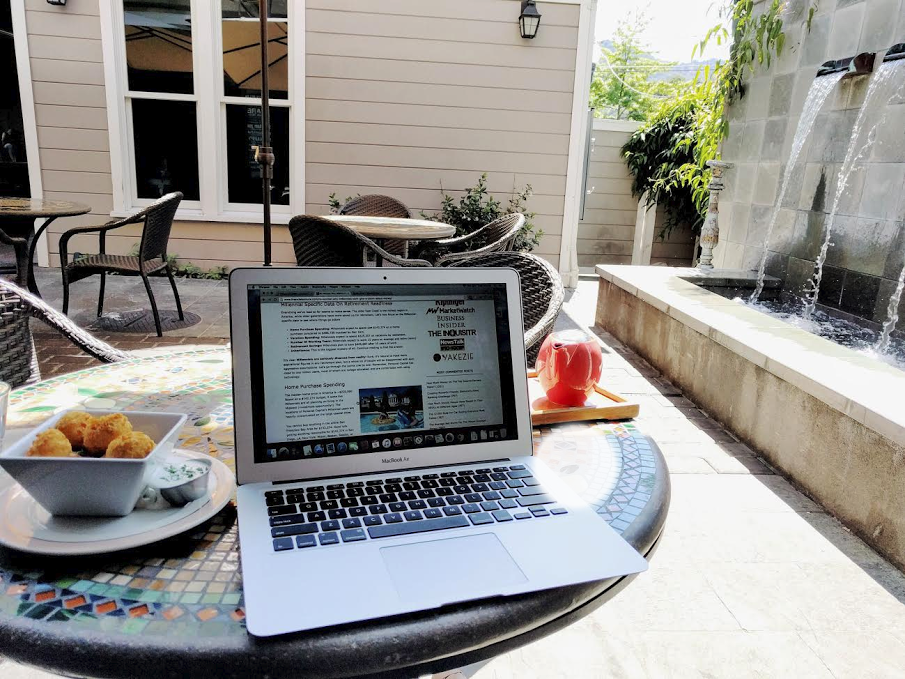A woman who retired at 28 with $2 million in the bank explains how she saved 70% of her income in New York City

Your support helps us to tell the story
From reproductive rights to climate change to Big Tech, The Independent is on the ground when the story is developing. Whether it's investigating the financials of Elon Musk's pro-Trump PAC or producing our latest documentary, 'The A Word', which shines a light on the American women fighting for reproductive rights, we know how important it is to parse out the facts from the messaging.
At such a critical moment in US history, we need reporters on the ground. Your donation allows us to keep sending journalists to speak to both sides of the story.
The Independent is trusted by Americans across the entire political spectrum. And unlike many other quality news outlets, we choose not to lock Americans out of our reporting and analysis with paywalls. We believe quality journalism should be available to everyone, paid for by those who can afford it.
Your support makes all the difference.Like any other 28-year-old New Yorker, JP Livingston spends her free time playing with her corgi, binging on Netflix, and exploring NYC. However, unlike most 28-year-olds, Livingston is retired.
After spending seven years in the finance industry, working her way up the ranks to a senior position at her firm, Livingston had built a nest egg of over $2 million — 40% from investing and 60% from pure savings — allowing her to fulfil a dream she'd held since middle school: early retirement.
"The way I think about it is: If you don't need to work for money, you can do anything you like," she told Business Insider. "If you want to go work at a traditional job, you can, but you don't have to. [Early retirement] is a word I picked up when I was looking at my future way back in middle school and high school."
Livingston landed a lucrative job straight out of college, earning $100,000 a year. However, she was determined to achieve her goal of financial independence and chose to live frugally, squirrelling away 70% of her take-home pay into savings. Even as her income rose year after year, she refused to succumb to lifestyle inflation, choosing instead to put even more money toward her retirement goals.
Since making financial independence a reality, Livingston spends her days working on her personal finance blog, The Money Habit, walking her dog along the Hudson River, and making up her schedule as she goes along — all while keeping her and her husband's combined expenses to about $65,000 a year.
As the second-most expensive city in the world, New York is notorious for its exorbitant prices. But as Livingston exemplifies, it's not impossible to enjoy city life without going bankrupt. Here are her four best tips and tricks for saving money in the Big Apple.
1. Identify your big-ticket expenses and cut them back.
The average American spends the bulk of their money on three things: housing, transportation, and food. For Livingston, minimising these big-ticket items paved the way for her to save at least 70% of her income.
"You really should focus on the biggest needle-movers to your spending," she said.
Though her high salary could have afforded her a much more extravagant apartment, Livingston chose to live with a roommate in a three-floor walk-up on the Upper East Side that cost her $1,050 a month — a reasonable price by New York standards.
"You've just graduated college, you're used to not-the-most-luxurious accommodations," she said. "That was my biggest thing. I know my contemporaries were probably spending $400 to $600 more on rent per month, so that's $7,000 more a year."
Even as her salary increased, Livingston kept her living arrangements modest. She and her husband now share a 300-square-foot one-bedroom apartment in the West Village for $2,400 a month, despite their multimillion-dollar nest egg.
By tackling her biggest expense first, Livingston could save and invest hundreds more per month than her peers. You'd have to cut out 100 lattes a month to achieve the same result.
Livingston said she saved up to 50% on her furniture by looking for gently used items on Craigslist. JP Livingston
2. Buy furniture secondhand.

New York's high turnover rate makes it an ideal place to score secondhand goods at dirt-cheap prices, especially through online marketplaces like Craigslist.
"Usually the stuff is less than a year old, just because there are so many people who are moving every year in the city," Livingston said. "There are people in the city for a couple years who then leave."
She routinely purchases her furniture through Craigslist, often for less than 50% of the original sticker price, she says. Livingston says New York's density and fast pace also makes it easy to take chances on pieces that end up being less than perfect.
"You can sell your mistakes really easily," she said. "Every once in a while, I'll buy something and never really use it, and I'll be able to offload it for a decent price."
3. Take advantage of the density of the city.
New York overflows with more bars, restaurants, and coffee shops than a person could visit in their lifetime, offering its residents variety in every sense of the word, from cuisine to atmosphere to price point.
If your apartment is too small to host multiple people, you don't have to head to a place with $16 cocktails to spend time with your friends. Livingston seeks out cheaper places to socialize that are still fun and chic.
"There's so many coffee shops where for $3 or $5 you've got a gorgeous space and something to drink or eat, and you get to hang out with your friends," she said. "I love taking advantage of stuff like that."
As a retiree, Livingston spends about 10 hours a week working on her blog, The Money Habit. JP Livingston
4. Think about every purchase in terms of cost per hour.

Livingston's No. 1 piece of advice for saving money comes down to a shift in mindset: Don't take prices at face value, but consider them in the context of how many hours of work it would cost — a strategy she picked up from Vicki Robin and Joe Dominguez's book, "Your Money or Your Life."
"If you think about how much you earn and you divide it by the number of hours you work, you get the amount of money per life unit," Livingston said.
Let's say your cost per hour comes out to $20. That means a new $700 iPhone would shake out to 35 hours' worth of work. A $100 night out would be five hours' worth. A $40 blouse would run you two hours' worth. Ask yourself: Is the purchase worth it?
Livingston emphasises that it's not just money saved — it's money that can be invested and increased.
"If I were to get one point across, it's that if you think of things as not just what you save that day, but having that money work for you and compound, it will totally change the way you spend money," she said.
Cutting out your daily latte isn't just $5 saved in the moment — it's $1,825 per year that could be garnering interest in an investment account. Keep that up for 10 years, add an 8% rate of return, and you have more than $33,000.
Read more:
• 30 architectural masterpieces everyone should see in their lifetime
• What people think of every country in the world, according to Google
• Men reveal the biggest changes they made to be better at dating
Read the original article on Business Insider UK. © 2016. Follow Business Insider UK on Twitter.
Join our commenting forum
Join thought-provoking conversations, follow other Independent readers and see their replies
Comments